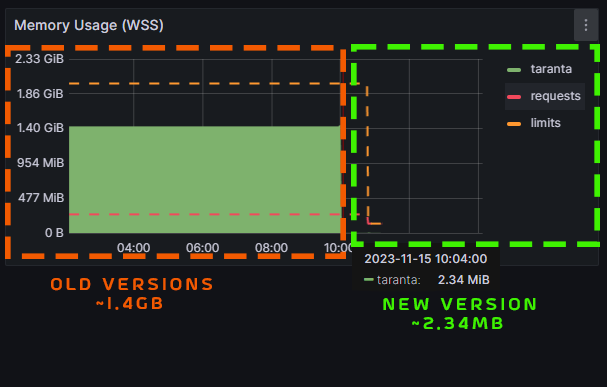Taranta Docker Image Build Process¶
Overview¶
Taranta is an integral part of the Tango-Controls project, collaboratively maintained by MAXIV and SKAO The development process involves a merge request (MR) system, where updates are reviewed and approved by both institutions.
Development and Integration¶
The source code is hosted on GitLab within the Tango-Controls project:
Taranta Suite Source CodeWhen changes are merged into the develop branch, they trigger a pipeline in the dedicated SKA repository. This repository is responsible for constructing the Docker image, configuring it for SKA deployment and pushing it to Nexus ska-tango-taranta:
SKA Tango Taranta PipelineConfiguration and Deployment¶
The SKA repository contains Docker configurations, including nginx.conf, which is templated to integrate dynamic namespaces during deployments.
A pivotal script, namespace.sh, modifies the namespace within configuration files, depending of what is set from charts templates using NAMESPACE var, aligning the Docker image with the targeted deployment environment. The script’s functions encompass:
Writing the namespace to nginx.html.
Modifying static asset paths in the main CSS file.
Launching the Nginx server in the foreground to enhance performance.
Performance Improvements¶
Transitioning from npm start - Development Build to run build - Production Build has markedly expedited startup times and minimized memory consumption.
Script used to check this stats:¶
#!/bin/bash
# Set the target pod name, namespace, and URL
POD_NAME="taranta-ska-tango-taranta-taranta1-0"
NAMESPACE="testnamespace"
URL="http://192.168.49.2/testnamespace/taranta/devices"
# Function to check the web page status
check_web_page() {
status_code=$(curl --write-out '%{http_code}' --silent --output /dev/null "$URL")
if [[ "$status_code" -ge 200 && "$status_code" -lt 300 ]]; then
return 0
else
return 1
fi
}
# Function to reinstall the pod and wait for readiness
reinstall_pod() {
start_time=$(date +%s)
kubectl delete pod $POD_NAME -n $NAMESPACE
# Pod reinstall logic
echo -n "Waiting for pod to be running and ready..."
while true; do
status=$(kubectl get pod $POD_NAME -n $NAMESPACE -o jsonpath="{.status.phase}")
ready=$(kubectl get pod $POD_NAME -n $NAMESPACE -o jsonpath="{.status.conditions[?(@.type=='Ready')].status}")
if [[ $status == "Running" && $ready == "True" ]]; then
echo -n "Pod is running and ready, checking web page..."
if check_web_page; then
echo "Web page is available."
break
else
echo -ne "\rWeb page not ready. Retrying..."
fi
else
echo -ne "\rWaiting for pod to be running and ready..."
fi
sleep 1
done
end_time=$(date +%s)
time_taken=$((end_time - start_time))
echo "Time taken for pod and web page to be ready: $time_taken seconds"
}
# Main execution
reinstall_pod



